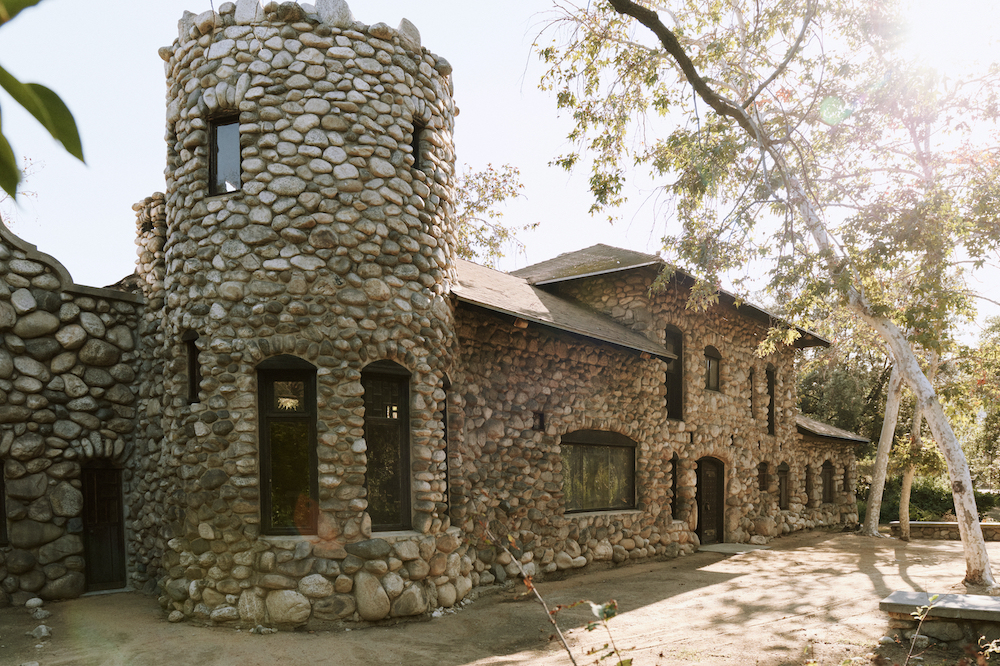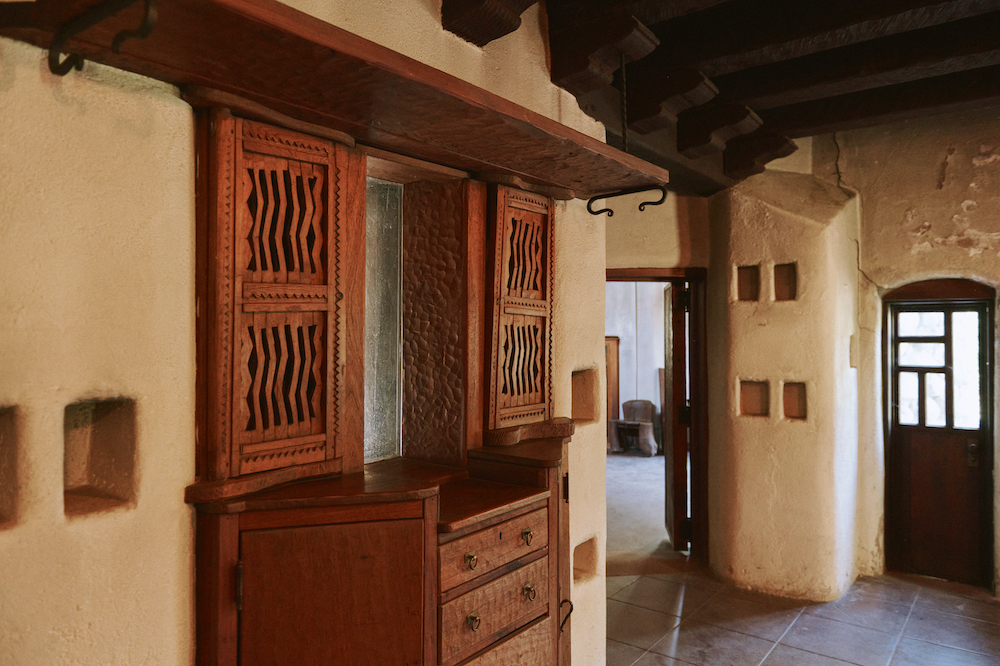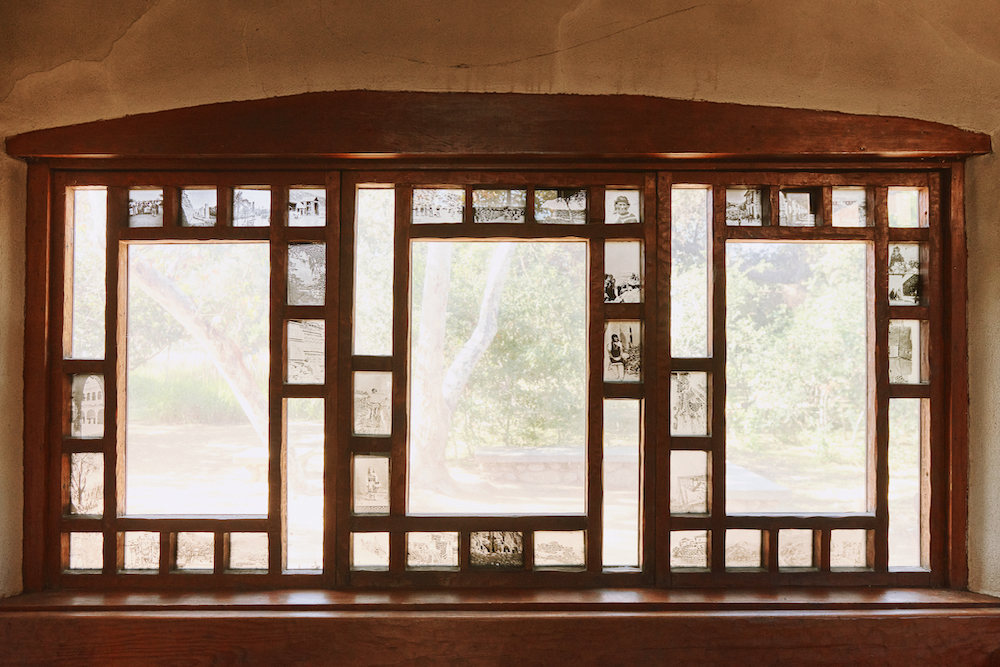Los Angeles in Three Great Houses: Part 1

Cities and civilizations leave enduring footprints. Think of Egypt’s Pyramids, the rows of statues on Easter Island, the white columns of the Parthenon in Athens. But Los Angeles has an unhappy habit of knocking down its past, its iconic buildings and houses – paving paradise to put up a parking lot and leaving no trace in the dust.
Yet there are a few footprints to follow, if you know where to look. They lead to remarkable houses, starting with the city’s oldest, the Avila Adobe, built in 1818 and still standing downtown on Olvera Street. Wealthy Californio rancher Francisco Avila built adobe walls three feet thick and sealed the roof with horsehair, rocks, and tar from the La Brea Tar Pits. His home was a social center in the early days of El Pueblo de la Reina de Los Ángeles, and reminds us that today’s multicultural city was once solely Hispanic.
Three other remarkable houses sum up the story of Los Angeles. One was the home of a flamboyant writer and regional booster of the late 1800s who drew dreamers to Southern California. One was the mansion of the lucky man who drilled the first oil well in Los Angeles, striking it rich and living the California Dream. The last is a staggeringly modern residence that shows how L.A., even while guilty of erasing much of its past, perpetually turns its face toward the future.
The Lummis House
A writer, editor, and activist for historic preservation and Indian rights, Charles Lummis arrived in the Southland in 1884. He had walked 3,500 miles from Ohio – in his street shoes – writing a weekly travelog on the way for the Los Angeles Times about his tramp through new and strange lands. The prejudices of his New England upbringing and Harvard education fell away, and he developed a deep love for the natural beauty and cultural diversity of the Southwest.
Lummis’s colorful articles earned him a national name, and after 143 days on foot, he arrived in Los Angeles to become the first city editor of the Times. A sort of pioneer of personal branding, Lummis dressed in flamboyant western style with buckskin leggings, a Navajo sash, a sombrero with a rattlesnake hatband, and an ammunition belt. His boss, Harrison Gray Otis, observed that Lummis’s garb “was not reassuring to the mind” and may have been “calculated to excite the curiosity of the police.”

Lummis’s work ethic and long hours as an editor led to a mild stroke that left him partially paralyzed, so in 1888 he moved to New Mexico to recuperate. There he freelanced articles about the Southwest, but when his exposé of corruption in his adopted town of San Mateo put his life in danger, Lummis decamped to the Native American pueblo of Isleta. (An assassin followed and shot him, though not fatally.)
By 1895 he was healthy and living again in Los Angeles, advocating for the preservation of California missions and editing the magazine Land of Sunshine (later Out West). The publication was produced by the chamber of commerce, but under Lummis it grew from promotional rag to literary magazine, showcasing the work of regional writers and artists, and celebrating the Southwest’s rich cultures and the romance of early California.
For his home, Lummis bought three acres just east of downtown in today’s Highland Park, paying $650. In 1897 he began building a 4,000-square-foot “castle” he called El Alisal, or “Place of the Sycamore,” after a towering tree on the property. The house was his love letter to the Southwest. A round tower resembled Hopi designs, and he incorporated New Mexico-style corner fireplaces, huge log beams, and Native American rugs.
Another goal was to celebrate the humble and handmade, inspired by England’s Arts and Crafts movement, a reaction against manufactured goods and standardized factory production. “A man’s home should be part of himself,” he said. “Some activity of his head, heart, and hands should make it really his.”
His rustic house was clad in stones pulled from a nearby creek in the Arroyo Seco (now the Pasadena Freeway). Boys visiting from Isleta Pueblo did the heavy lifting, while Lummis crafted quirky, charming woodwork for doors, windows, and built-ins. Utterly unlike the Victorian houses of the day, his home looked like a piece of folk art.

It was also a social center, and Lummis’s talent for networking was way ahead of its time. At his frequent parties, which he called “noises,” luminaries – who ranged from naturalist John Muir to movie idol Douglas Fairbanks – might meet a survivor of the Wounded Knee Massacre, watch Will Rogers perform rope tricks, and revel with artists and musicians. Lummis purposely designed the main room with a concrete floor so that after his bashes it could easily be cleaned with a bucket.
Lummis’s moral shortcomings were also on view. During his life he had three wives, two divorces, and some fifty extramarital affairs, scrupulously recorded in a notebook coded in Greek. He also alienated his children and battled alcoholism.
Yet Charles Lummis managed to write sixteen books and hundreds of influential articles, document the Southwest’s vanishing cultures in photos and rare recordings, become head of the Los Angeles Public Library, and founded the nearby Southwest Museum, whose fine collection of Native American artifacts included his own donations.
High spirited, flawed, eccentric, but of deeply serious intent, Charles Lummis had a profound love for the Southland. It infuses his house, a pioneer in the residential history of Los Angeles.
Visiting:
Lummis House: 200 East Avenue 43, (323) 226-1620; open Sat. & Sun. from
10 am – 3 pm
McPherson Parsonage: 1801 Park Ave., (213) 989-4444 for reservations; tours Mon. to Thurs. at 1 pm, Fri. at 10 am
Jerry Camarillo Dunn, Jr. worked with the National Geographic Society for 35 years. The author of 11 books and 600+ magazine and newspaper pieces, he has won three Lowell Thomas Awards, the “Oscars” of the field, from the Society of American Travel Writers. His “Curious Traveler” column in the Montecito Journal received the SATW gold medal.





